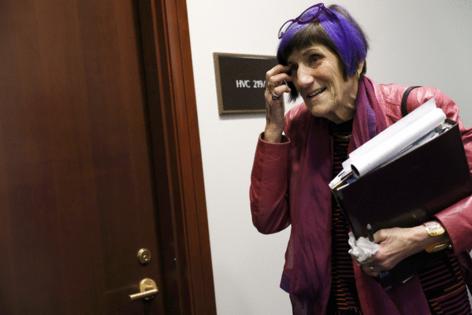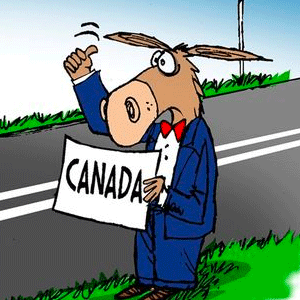Supreme Court stays lower court orders for USDA to pay November SNAP benefits
Published in News & Features
WASHINGTON — The Supreme Court on Friday granted the Agriculture Department’s request for administrative stays on two federal court orders requiring the agency to fully pay November food stamp benefits.
The high court intervention came hours after an appellate court denied the request for a stay. It also came hours after the department notified state agencies managing the Supplemental Nutrition Assistance Program that it would pay the November benefits in full by the end of the day. The department has said November benefits would cost $8.5 billion to $9 billion.
But the administration asked the Supreme Court to intervene quickly, saying that it has no “ready mechanism for the government to recover those funds — to the significant detriment of those other critical social programs whose budgets the district court ordered the government to raid.”
Justice Ketanji Brown Jackson signed the stay pending the 1st Circuit Court of Appeals’ decision on a motion from the administration to block the orders.
The Supreme Court stay wrapped up a flurry of court filings and memos Friday that had the administration at one point saying it would pay the benefits even as it was trying not to.
The USDA memo to state agency directors of the SNAP said the department would on Friday complete the needed processes “to make funds available to support your subsequent transmittal of full issuance files to your EBT (electronic benefit transfers) processor.”
Patrick Penn, the USDA deputy undersecretary for Food, Nutrition and Consumer Services, sent the memo the day after a federal judge in Rhode Island gave the department until Friday to fully pay November benefits.
House Appropriations ranking member Rosa DeLauro, D-Conn., who had said she was “cautiously optimistic” after the memo that full food stamp benefits would reach recipients, also warned of more obstacles.
“We must remain vigilant to ensure this assistance actually reaches the families it is intended for immediately,” she said in a statement. This uncertainty and delay is entirely unnecessary. If the Trump administration wanted to fully fund food stamps, they could do so with no ambiguity.”
The administration also filed an appeal to the 1st Circuit on Friday, asking that court for an emergency stay only to have it denied.
The administration says Chief Judge John J. McConnell Jr. in the U.S. District Court for the District of Rhode Island erred Thursday by ordering USDA to use about $4 billion in so-called Section 32 money to help pay November SNAP benefits. The judge had earlier ordered the department to also use $4.65 billion in a contingency fund.
But the administration says Congress didn’t authorize money from Section 32, an account established under a 1930s law that is funded by customs receipts and appropriations, for food stamps. Approximately 42 million people receive SNAP benefits each month.
“Instead, a single district judge has devised his own solution: ordering USDA to cover the SNAP shortfall by transferring billions of dollars that were appropriated for different, equally critical food-security programs — and to do so within just one business day (i.e., by today). This unprecedented injunction makes a mockery of the separation of powers,” the government filing said, asserting that the court doesn’t have the ability to direct appropriations.
“There is no lawful basis for an order that directs USDA to somehow find $4 billion in the metaphorical couch cushions,” it said.
The administration has said since the partial government shutdown began on Oct. 1 that it couldn’t use the contingency fund and then couldn’t use Section 32 money, only to be directed by the court to do so. Its interim effort to use only the contingency fund meant potential delays of weeks as agencies reworked their systems to handle reduced benefits, resulting in a missed court deadline for partial payments.
The USDA says the Section 32 account is mostly directed toward child nutrition programs, including National School Lunch and Breakfast Programs, Summer Food Service Program and Summer EBT, also known as SUN Bucks.
The USDA said the school breakfast and lunch programs serve approximately 29 million children with low-cost or free school lunches. It added that transferring the $4 billion to fund SNAP would cause a “shortfall” in child nutrition programs and require additional appropriations.
But SNAP, like child nutrition programs, also serves kids. The USDA said in a July report that in fiscal 2023, about 39% of SNAP recipients were children.
_____
(Michael Macagnone contributed to this report.)
©2025 CQ-Roll Call, Inc., All Rights Reserved. Visit cqrollcall.com. Distributed by Tribune Content Agency, LLC.







Comments